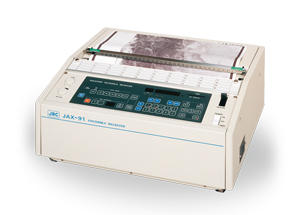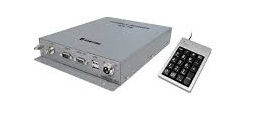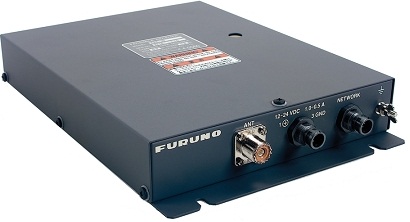JRC JAX 9A/B
-
Available for order
-
Certificate:РМРС
JRC JAX 9A/B
To order
Call our sales manager
Documentation
Brochure 'JAX 9A/B'
Operational manual 'JAX 9A/B'
Operational manual 'JAX 9A/B'
The JRC JAX-9B receiver is designed to receive fax broadcast signals in the range from 2 to 25 MHz, including important data such as weather and navigation maps, and displays them graphically on thermal paper. When using the JJC decoder (NWF-45), the JAX-9A model can also receive and print signals from pay-per-view broadcast stations, including Kyodo News. This makes the device an indispensable tool for maritime and aviation services, as well as for radio communication enthusiasts. The receiver has been approved by the Russian Maritime Register of Shipping, which confirms its reliability and compliance with high safety standards. The JRC JAX-9B fax Receiver is a compact and lightweight device that offers many advanced features for flexible and efficient operation. One of the key features is automatic recording. All operations can be controlled remotely, which allows you to automatically start the device, adjust parameters, receive images, feed paper and stop the process using remote signals from broadcast stations. The only exception is the halftone recordings, which are manually controlled, which gives the user additional control. The manual recording function provides the ability to independently set the interaction index (IOC), scan speed and halftone recording parameters. In this mode, the JAX-9B automatically captures stops, which facilitates the recording process. The frequencies and parameters of the halftone recordings are easily programmable, which in combination with the fully automatic mode ensures reliable and error-free operation of the device. All received faxes can be displayed on a PC, which allows you to preview and save images before they are actually recorded. This feature greatly simplifies the process of making operational decisions, allowing you to quickly respond to changes. Moreover, the JAX-9B can be configured for remote control, which makes it an ideal solution for users who need a high degree of autonomy and ease of operation.
| Specification | |
| Recording system | Recording with the thermal printhead |
| Paper to record | Heat sensitive paper (roll - 305 mm x 50 mm) |
| Effective bandwidth Print | 256 mm |
| Index cooperation | 576/288 |
| Scan speed | 60,90,120, 240 SPM |
| Density scan lines | About 7 lines / mm or 3.5 lines / mm |
| The frequency of the reference oscillator | 5505.024 MHz crystal controlled |
| Frequency Stability | within ± 1.0 x 10-5/den |
| Phase matching | automatic or manual |
| Inversion Black / White | Manual switching |
| External input | 600 ohms, 0 dBm, 1900 ± 400 Hz low-pass |
| View received modulation | F3C |
| Reception frequency range | HF 2.0000 to 24.9999 MHz |
| The frequency indication | 6, a digital LCD display (10 to 100 MHz) |
| Capacity | 90 different frequencies |
| Sensitivity | Signal / noise ratio of 20 dB, line input 2 ?V (+6 dB?) or less gives the output-5dBm. |
| The first signal selection |
Band 2.4 - 3.0 kHz 6 dB suppression band 6 kHz or less than - 66 dB suppression |
| Supply voltage | 12 - 40 V DC |
| Power consumption | no more than 70 VA |
| Weight | 7 kg |
| Operating Temperature Range | -10 To +45 ° C. |
| Dimensions | 358 x 254 x 107 mm (including the mounting plate) |
Analogues
 +7 (812) 4-673-673
+7 (812) 4-673-673




